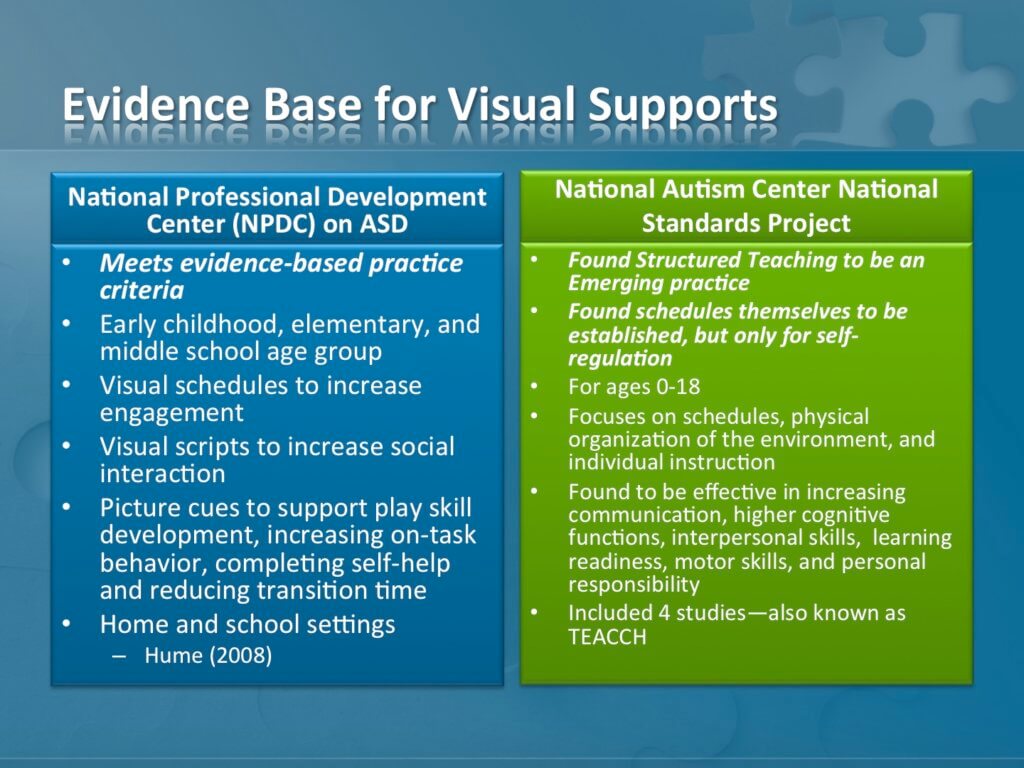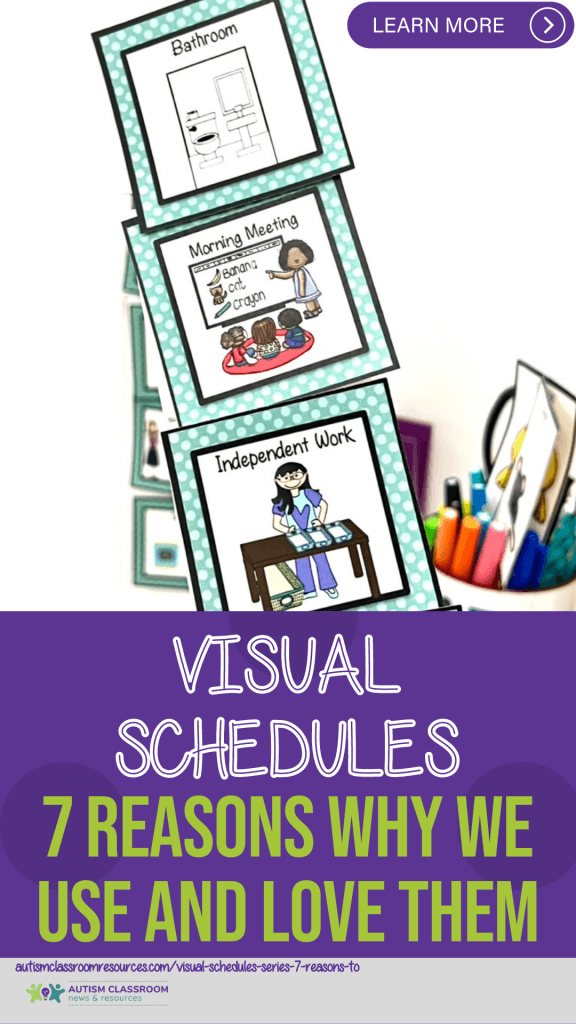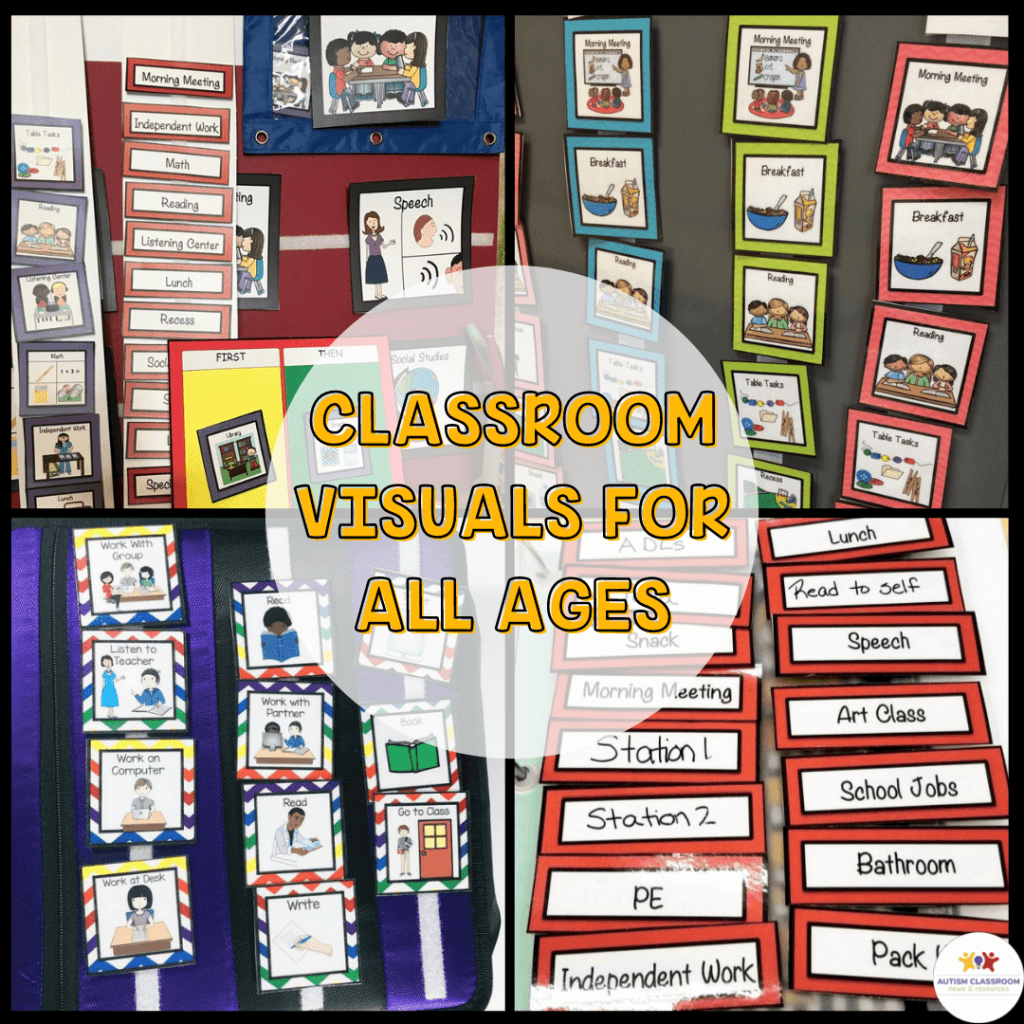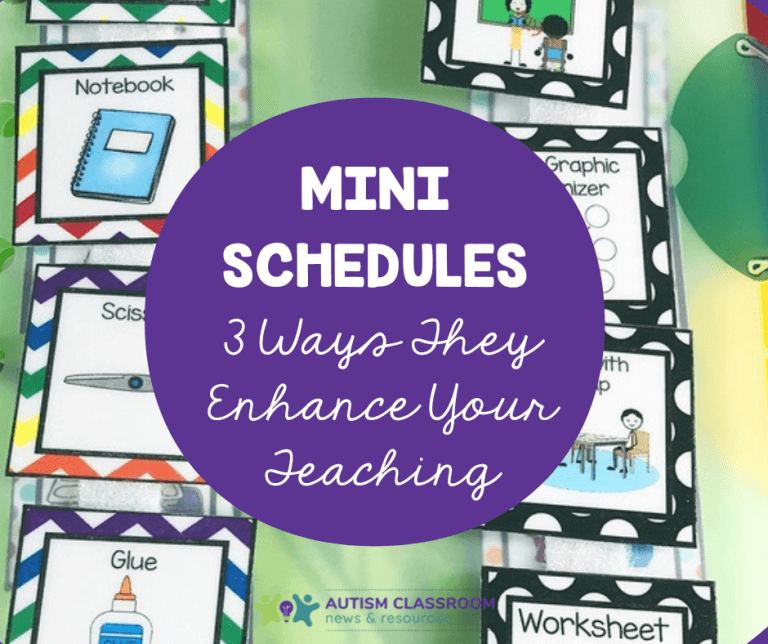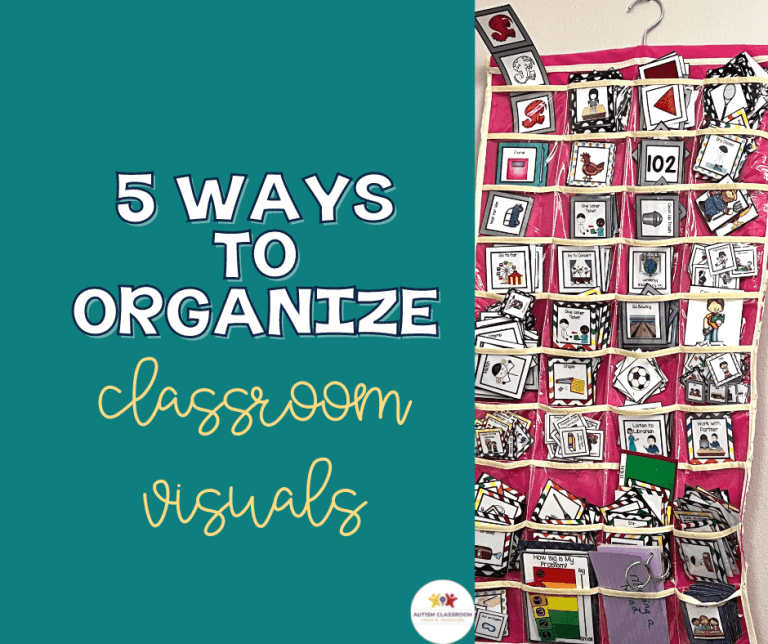Sharing is caring!
So often, those of us who have worked in the field for a while, take the benefits of visual schedules for autism spectrum disorders for granted. We forget that others don’t always know WHY a visual schedule is so important for our students on the spectrum. And frankly how useful they can be for students in special education who have other disabilities.
This post kicks off a series focused on the whys and hows for visual schedules for autism in the classroom. I’ll be talking about types of schedules, how they work and more with lots of pictures and examples of picture schedules, object schedules, and written schedules.
Visual Schedules for Autism
We can use visual schedules for autism as a group or individually. And they come in many different formats. Some students benefit from picture schedules. Others can do well with written schedules, and some might need a schedule made of objects.
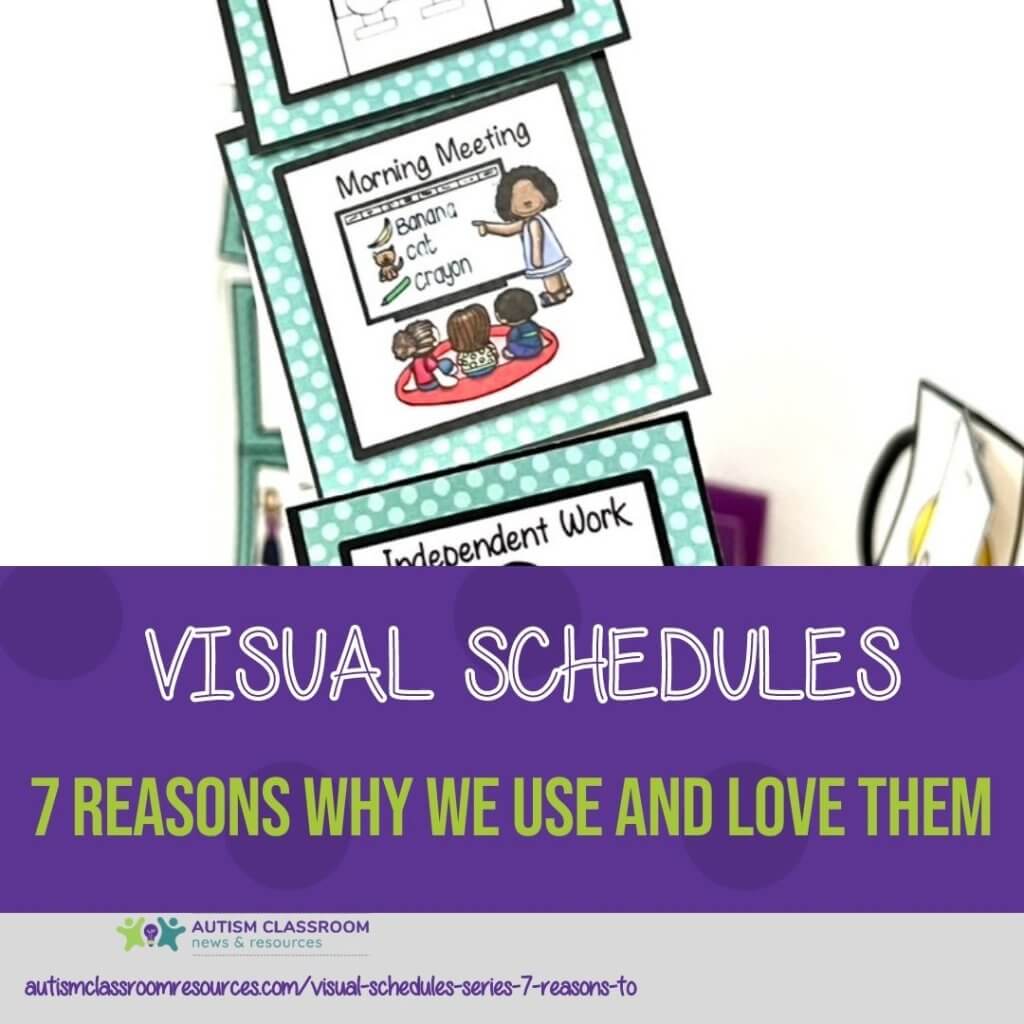
The next few posts will focus on different types of individual schedules, why we need group schedules and when they are appropriate by themselves, the use of first-then schedules, deciding about the form of schedule (e.g., object, picture-symbol, photo or written) and the use of mini-schedules. We will look at schedules in a variety of settings including self-contained classrooms, inclusion classrooms, work sites, community and home.
For this first post, I want to start with why schedules are important for students with autism and some general thoughts about developing them.
Why Use Visual Schedules for Autism
Visual schedules and visual supports have many benefits for individuals with autism spectrum disorder and other developmental disabilities. Today I’m going to focus on 7 reasons why they can be really helpful for the individual and also for the classroom.
#1 Visual Schedules Increase Independence
The primary reason I see for using visual schedules is that they promote independence in many ways. If you have a schedule, you can transition and navigate your day without another person having to tell you where to go and what to do.
![7 Reasons to Use Visual Schedules in Autism: #1 Build Independence [picture of written and picture schedules]](https://autismclassroomresources.com/wp-content/uploads/2013/05/7-Reasons-to-Use-Visual-Schedules-in-Autism-2-1024x1024.jpg)
Students in special education spend a good bit of their time with assistance from teachers, paraprofessionals and even other students. Consequently, it’s critical that we address independence as a life skill for explicit instruction.
Many people worry that picture schedules or written schedules will promote rigidity for the student to get stuck on the schedule cards. I bust this method in this podcast, but the short version is that it IS a myth. As a quick example. I’m willing to bet that most of you reading have a daily planner. And if we took away the planner, some appointments and tasks would not happen because you didn’t have it to remind you. A visual schedule is no different–it just may take a different form to fit the needs of the student to be able to use it effectively.
#2 A Visual Schedule Helps Prevent Power Struggles
If I have a schedule that tells me what to do, I can’t argue with it. I can’t tell you how many times I have said, “Schedule says __” and had the student follow the direction; but if I said, “I need you to do ___” it wouldn’t happen. The schedule takes the “personal” piece out of it and makes it more objective.

In fact one of the ways you KNOW your student gets how to use the schedule independently is when they start shifting the schedule cards around or crossing things off their written words schedule. When they start thinking they can change what happens in the room, it’s a good sign that the schedule is working for them. And that they know they can’t argue with it. BTW, if that happens, just shift it back to the right schedule and move on.
#3 Visual Schedules Provide a Permanent Reminder
I can leave a schedule with you and you can check it throughout the day. When the teacher moves on to another student, the activity or the transition doesn’t stop.
If I need to stand next to the student and point to the work he is supposed to be doing, he isn’t working independently. But if he had a list of things to do that he could check off, and could then work with you moving around the room instead of right by him, that permanent reminder helps him be independent.
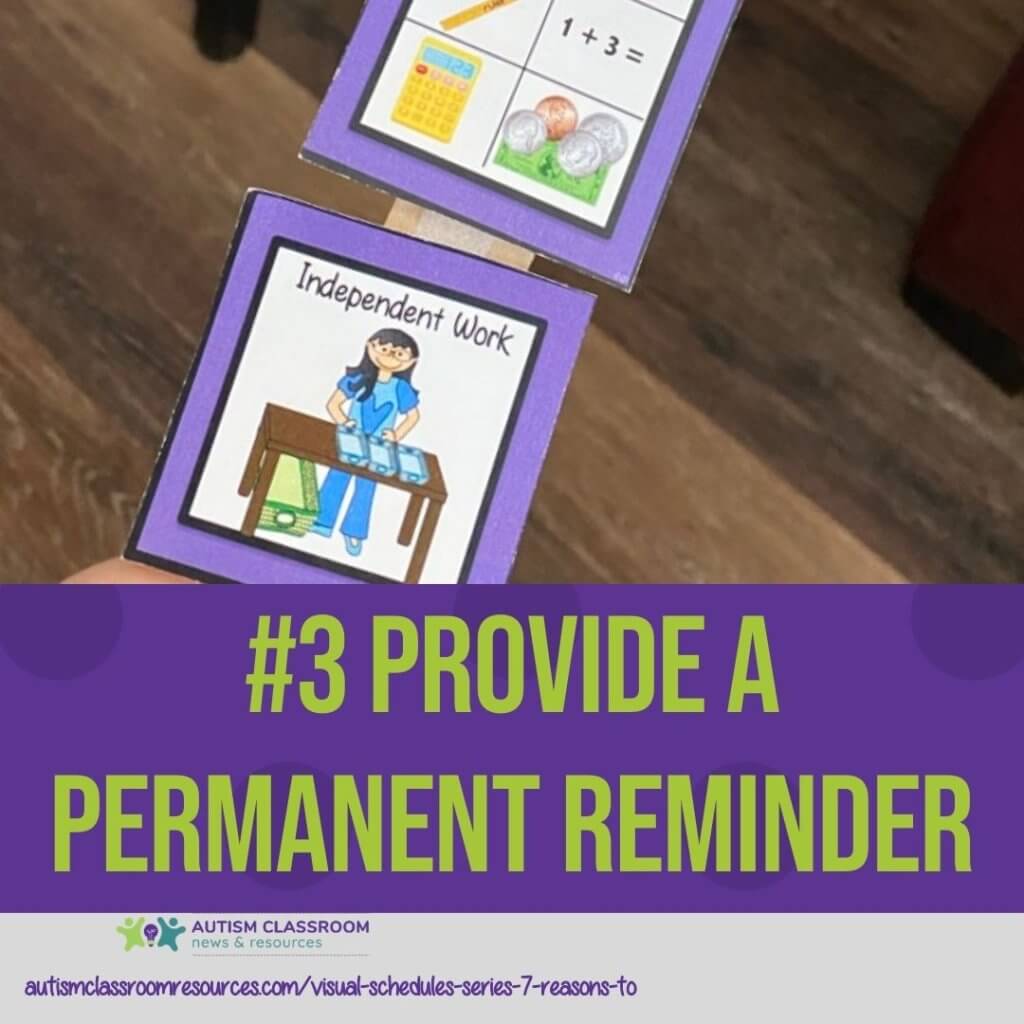
It’s like having a to-do list. If I complete the tasks on my to-list on my way, I’m independent. But if I have to keep asking someone “What’s next?” to find out the next thing to do, then I’m not. Then I would need to always be working with someone’s supervision. When you first implement visual schedules, students might need reminders to check their schedule. As they become more independent, you don’t need to be there. They have a visual reminder of their to-do list.
#4 Visual Schedules for Autism Reduce Anxiety
Ever have a student who engages in constant questioning? Sometimes it’s because they are anxious about what is going to happen next. A picture schedule (or written or object schedule) allows them to check their schedule instead of checking with you. This is a way we all self-regulate at times. Reducing anxiety allows them to focus on the task at hand.
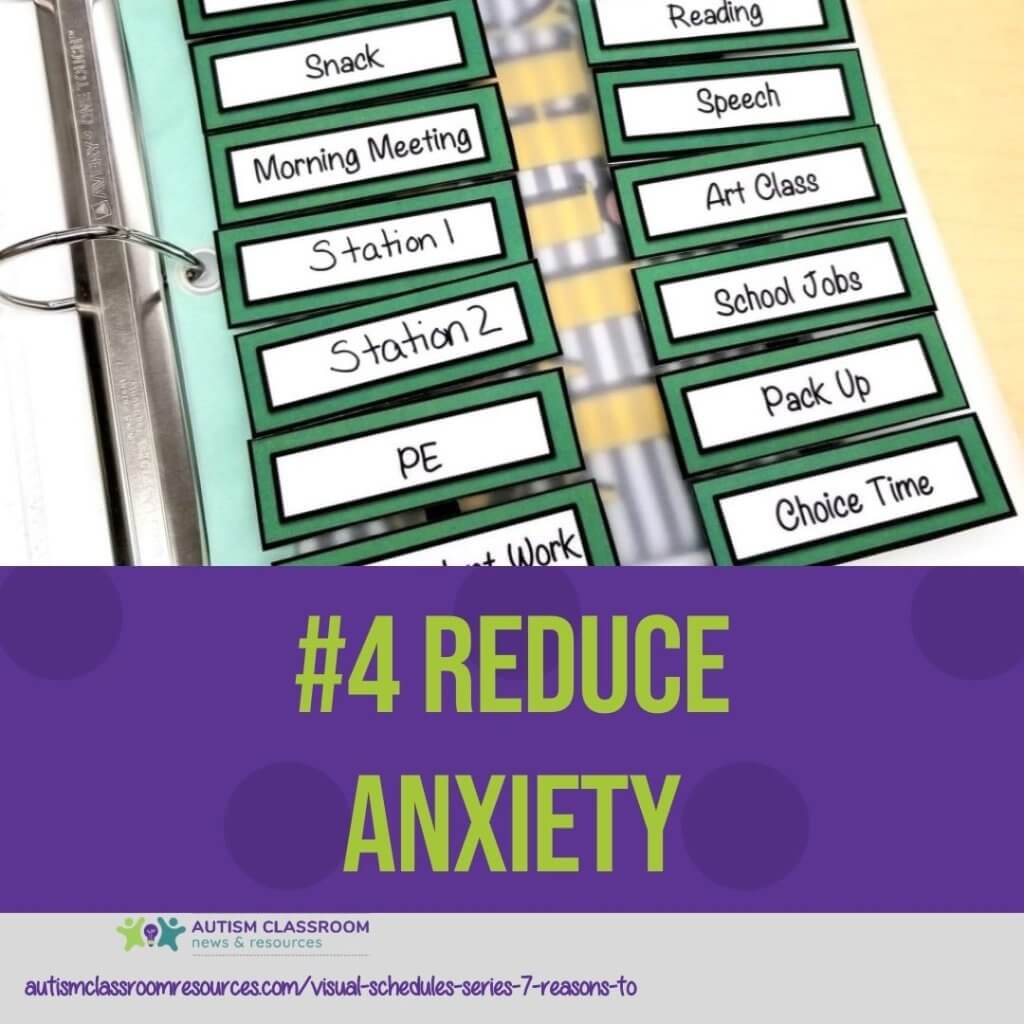
I always think about when I’m taking a flight somewhere. I become a little OCD about when the flight is leaving. But i don’t continually ask for reminders about when the flight is leaving. I check my app and reassure myself that I have time. That visual support of seeing the time my flight is leaving reduce anxiety for me. It helps me self-regulate.
#5 They Communicate the Daily Routine and Unexpected Events
The give students information about what is going to happen and what is expected. When I check my schedule and it tells me we are going to PE, I know to be prepared to go outside. If it tells me it’s time for lunch, I know to prepare myself to enter the loud and smelly cafeteria. This communication also helps students use picture cards receptively to understand upcoming activities. For many kids it builds communication skills as well.
![7 Reasons to Use Visual Schedules in Autism: #5 Reduce Surprises [picture of picture schedules on a filing cabinet]](https://autismclassroomresources.com/wp-content/uploads/2013/05/7-Reasons-to-Use-Visual-Schedules-in-Autism-6-1024x1024.jpg)
As I mention in this post about teaching flexibility, the schedule doesn’t cause the student to be stuck on the daily sequenced activities and upset when there are unexpected activities. Instead, using positive reinforcement and preferred activities, we can teach students to be more flexible using a visual schedule. It also creates fewer surprises.
#6 Individuals with Autism Often Have Better, More Efficient Understanding of Visual Information.
This isn’t true of all individuals on the spectrum, but for many they comprehend information faster and more easily visually. So why not use a medium that uses their strengths.
In fact most of us process visual information more efficiently and effectively than auditory cues. As I’ve said, we all use a schedule of some type, most likely a visual schedule like a planner. Why not use what works for you. If you have ever tried to use someone else’s planner system who didn’t think like you, you know how hard that shift can be.
![7 Reasons to Use Visual Schedules in Autism: #6 support visual learners [picture of group schedule]](https://autismclassroomresources.com/wp-content/uploads/2013/05/7-Reasons-to-Use-Visual-Schedules-in-Autism-7-1024x1024.jpg)
We should always be using the level of information to convey the daily tasks or routine that is easier than what we are capable of understanding. Because when we are stressed, we are likely not able to process at that highest level. That’s when our students with autism spectrum disorder’s visual schedule comes into play.
#7 Using a Visual Schedule is an Evidence-based Practice
There is a ton of research that exists now for using pictures, words, and objects in creating a visual schedule. The National Clearinghouse on Autism Evidence & Practice found visual supports to be an evidence-based practice in 2020 for individuals with ASD from 0-22 years old. And the National Standards Project found visual schedules to be an established practice for 3-9 year old children with autism in 2015.

More Information About Visual Schedules for Autism
There are several other reasons to use schedules that I talk about in this series. Over the next posts you’ll find information about:
- Different types of schedules including object schedules, picture schedules, and written schedules
- Different ways to use schedules like using it for the daily schedule or to show the steps of a task using mini-schedules or activity schedule. Or full day or part day schedules.
- How to teach students to use visual schedules
- How teachers can use visual schedules to teach flexibility
- and how visual supports can prevent challenging behavior.
Looking for Visual Schedules to Use In Your Classroom? Check these out
Find Everything You Need for Schedules & Visuals Here

